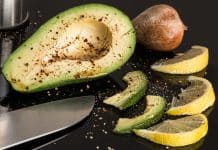Do you know all the beef cuts? Even if you know a few, it can be more complicated than you might think. Not all countries divide the carcass in the same way, nor do they call all the cuts by the same names. Most countries have a unique style of dividing a carcass. Britain, America, as well as South America and European countries all cut their carcasses in different ways.
South Africa and other countries previously under British rule, use the British cuts. In this article we look at the different meat cuts and how they are used. We also share two ways to use cuts of beef in very traditional ways.
Here’s a good boerewors roll recipe to try.
Everyone loves a steak
Although not everyone might agree on how to cook a steak correctly, most of us can agree that we love steak. It is, however, an expensive product.
Here are some of the most popular steak cuts:
- Rump: This cut is probably the most sought-after steak, known for its tenderness.
- Round: This cut is found at the rear leg. Often cut as a round steak or can also be used as a whole roast.
- Loin: This cut comes from below the rib cage, but above the round. This cut is butchered into tenderloin and sirloin. In South Africa tenderloin is better known as fillet, a popular steak that is almost always tender, but often needs something to enhance the flavour. The T-bone is cut from the sirloin and is often considered to be one of the best quality steaks, as it contains two cuts of steak divided by the T-shaped bone. The side with the smaller piece of meat is cut from the fillet.
- Flank: Located at the abdominal muscles or lower chest area. This is a popular steak cut in many countries.

Stews are irresistible
Stew cuts are often more affordable and have great flavour. The secret is in cooking it slowly and with moisture to get it tender. No one can resist a hearty stew in the winter.
Popular stew cuts are:
- Chuck: Chuck refers to the shoulder and neck of the animal. The cut is flavourful and economic, but the challenge is to get it tender.
- Brisket: This cut is very flavoursome, making it one of the best cuts for braising and slow cooking. Although a brisket might be tough, it can melt in the mouth if cooked slowly for a long period.
- Short rib: This cut of rib is meatier and more tender than other rib cuts, but needs to be slow cooked. It can be slow cooked in the oven or used as a stew meat.
- Shank: The leg portion of the animal also known as shin. It tends to be tough, dry and sinewy, yet tasty. Best cooked for a long time in moist heat. It is an ideal cut to use for stock.
Beef stock
Beef stock is easy to make and will always taste better than any store-bought stock. Ask for beef bones at your local butchery or supermarket. You can use any stew meat for stock.

Ingredients
1kg beef bones
400g stew meat
Water
50g tomato puree
1 onion, cut
1 carrot, cut
2 celery pieces, cut
One sprig of thyme, rosemary, bay leaf, and parsley
Salt and pepper to taste
Method
- Roast the bones and meat in a pan for 15 minutes until golden brown. Rub each piece with puree and roast for another 15 minutes.
- Add the bones and meat to the vegetables.
- Now tie the herbs into a bunch with a piece of string. This is known as a bouquet garni. It is tied to the handle of the pot and submerged in the liquid while cooking.
- Add water to cover the mixture. Also add salt and pepper to taste. Cook for about six hours over a low heat.
- Drain and store the stock in a two-litre bottle in the fridge for use in stews, soups and sauces. Or divide it into cubes in an ice tray for smaller portions.
Hearty beef potjie
For this potjie, you can use your own beef stock to impress your guests or family around the potjie.
Ingredients
1kg beef stew meat
1 onion, chopped
1 celery piece, chopped
2 bay leaves
¼ cup Worcestershire sauce
2 cups of beef stock
Water
4 medium potatoes, cut
3 carrots, cut
Salt and pepper to taste

Method
- Sauté the meat with the onion on high heat over the fire in a cast iron/tri pot.
- Add the remaining ingredients. Add just enough water to cover the ingredients.
- Allow the potjie to cook for two hours and 30 minutes over a few coals, just enough to keep the contents slowly cooking (add coals if they burn out).
- Serve with your favourite starch such as rice or samp. – Ursula Human, FarmBiz








